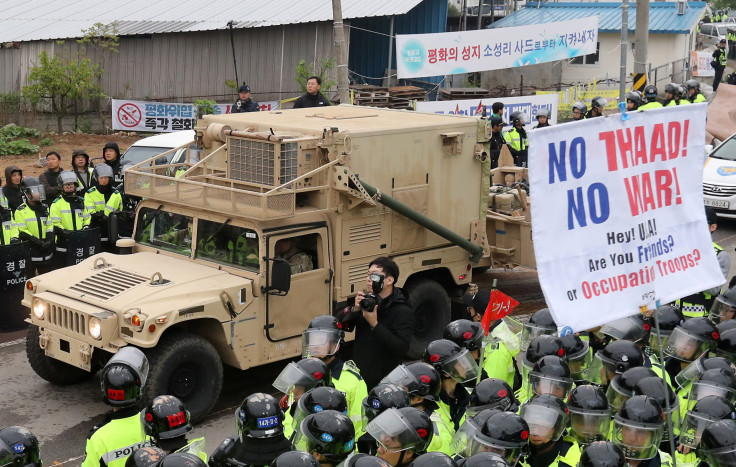Will There Be A Nuclear War With North Korea? U.S. Installs Missile Defense System In South Korea

The U.S. military began installing a missile defense system in South Korea Wednesday, designed to intercept missiles launched by North Korea. The installation of the Terminal High-Altitude Area Defense system was met with protests from South Koreans and condemnation from China.
The system, known as THAAD, was conceived last year under the administration of former President Barack Obama. When used, THAAD would destroy short and medium-range missiles launched by North Korea before they reached their target, but is not expected to be ready for deployment until the end of 2017.
Read: Vice President Pence Says Policy Of Strategic Patience Toward North Korea Is Over
“South Korea and the United States have been working to secure an early operational capability of the THAAD system in response to North Korea’s advancing nuclear and missile threat,” South Korea’s defense ministry said in a statement.
Residents met the arriving equipment with protests as concerns over security mounted.
China, for its part, opposed the installation of the missile system, saying it would further destabilize the region. China previously condemned escalating tensions between the U.S. and North Korea, calling for an immediate end to threats from both sides.
“The United States and South Korea and North Korea are engaging in tit for tat,” China’s foreign minister, Wang Yi, said earlier in April. “We call on all parties to refrain from provoking and threatening each other, whether words or actions and not let the situation get to an irreversible and unmanageable stage. Force cannot solve the problem, dialogue can be the only channel to resolve the problem.”
Read: Video Of Young North Korean Defector Exposes Horror Of Regime
Tensions mounted between North Korea and the U.S. in recent months, with both sides threatening action against the other. The U.S. became increasingly concerned that North Korea was planning additional missile and nuclear tests, while North Korea blamed the U.S. for escalating the situation. The U.S. deployed submarines and warships to South Korea recently in an attempt to guard against imminent action by North Korea.
“By relentlessly bringing in a number of strategic nuclear assets to the Korean peninsula, the U.S. is gravely threatening the peace and safety and driving the situation to the brink of a nuclear war,” North Korea said in a statement earlier in April. “This has created a dangerous situation in which thermos-nuclear war may break out at any moment.

© Copyright IBTimes 2024. All rights reserved.





















